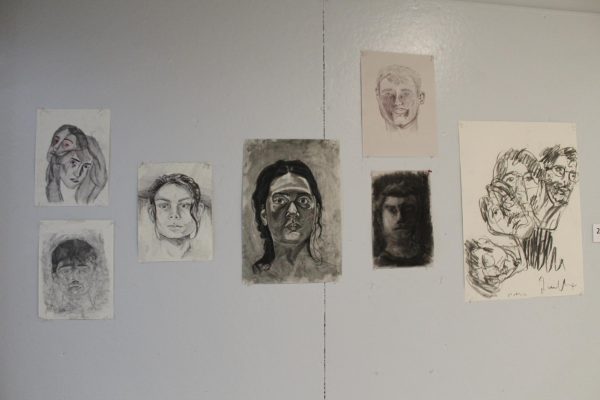A Beginner’s Guide to Stars

A picture of the stars, taken by Hadley on her iPhone.
With next week (supposedly) being really warm, the prime times for clear nights approaches. Whether you can bundle in a sweatshirt and bring friends or just vibe alone under the stars, it might be new for some of you. So, here’s a little brief read that will give you an overview of some cool things to look out for.
Here I will tell you the best places to catch a glimpse of the dark sky on campus, how to easily impress your friends, and how to take decent photos to post on your Instagram feed. I know Lewiston isn’t dark sky certified, but for a city it’s not bad.
Where?
Alright, so as you can probably guess you need to have dark areas to see the stars. The best dark areas on campus, in my opinion, are probably the top of Mt. David, by the amphitheater, or even by the puddle. Even sometimes if you wander onto one of the sports fields that has the lights off you can catch a decent view of the sky. I personally like the spot in the quad where the trees don’t block the light from the stars. I can just drag one of the Adirondack chairs and lay, looking at the sky with my headphones in.
What are we looking at?
The stars are ever-changing but if you can spot a couple of bright stars, they can act as a cool way to impress someone. Right now there are a couple of easy to find constellations out in the sky.
Ursa Major and Minor, or Big Dipper and Little Dipper are out in the night sky. They are pretty famous constellations but if you don’t know how to find them just look for the trapezoid followed by a tail of three stars. Ursa Major is to the northeast, almost 90 degrees up in the sky and the Little Dipper is to the north about 45 degrees above the horizon.
If you did or did not find them there is also Orion. It is fairly straightforward to find on a clear night. If you look southwest for three stars that are almost equal distance you can see the belt. If you look around the belt for more stars that constitute the body, you might be able to make out the figure. A cool little fun fact is that it’s named after Orion, the hunter, from Greek mythology.
The next constellation that is even more impressive to find is Cassiopeia. This constellation is named after the vain queen with the same name in Greek mythology. It can be recognized by its distinct “W” shape. The constellation is located around 25 degrees above the horizon to the northwest. Just look for the “W,” I promise once you see it you won’t miss it.
Towards the West, right over Venus, there is a constellation called the Pleiades. This is a collection of stars that are only visible when it is in really good gazing conditions so it might be hard to find. But if you do see them they will look like a faint haze. Sometimes, if you’re lucky, you can make out multiple stars.
Not to promote apps, but I use an app called “Night Sky” that’s free and has a mode for red light to keep scotopic vision (so your eyes don’t get unadjusted to the sky). You can wave it around and look at the sky like it’s a map, which probably makes more sense then my vague directions. You can also get notifications like how I get notifications every single time the ISS passes overhead. I’ll probably turn it off some time.
How?
Although I have been saving up for a camera with an adjustable shutter speed and the ability to shoot in RAW, I have been messing around with my phone’s camera to try to catch a fraction of the beauty I see. Thanks to my carrier, I have an Apple 13 something. I don’t remember exactly but I just know it has an option for night mode. This is important for taking decently cool photos of the sky.
So here’s how to do the photos for a phone that has that option:
- Turn the “night mode” or the little moon icon to max. This will probably on its own look cool but if you also turn the timer to 10 seconds, the phone will have time to steady itself.
- Set the phone on the ground, front camera to the sky, and press the volume button that allows you to take a photo.
- Leave the phone for the time until the photo is taken. If you’re not sure, just guess.
Your donation will support the student journalists of Bates College and help us cover our annual website hosting costs.

Hadley (she/her) is a senior from Buckfield, Maine (close to Bates) majoring in Earth and Climate Science and Music with a minor in religious studies....






